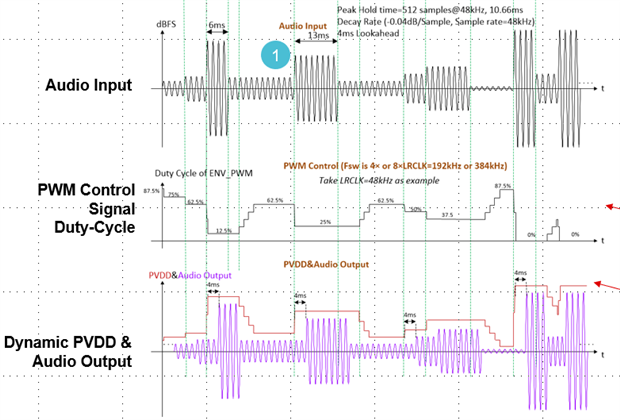Other Parts Discussed in Thread: TAS5825M,
Hi:)
I am currently working on a design that uses 2x TAS5825P + 2x TAS5825M and have now come to the point where selection of a suitable Boost-Converter is required.
However I did not find any documentation on how to choose a proper Boost-Converter for use with the Hybrid-Pro feature of the TAS5825P and would like to get some help and/or recommendations if possible.
----------------------
Q1: What minimum Switching frequency is recommended? (TAS: 384KHz)
Q2: Are there any Loop-Gain requirements?
Q3: Since I will be using 2 Fullrange drivers and 2 Subwoofers with different output requirements, would it be beneficial if I choose 2 separate Boost-Converters instead?
Q4: Are there any 2-Phase Boost-Converters available for this application?
----------------------
My design:
Input: 6.40V to 8.20V (2S Li-Ion)
Booster output: 9.80V to 20V 6.5A Peak
-
1-TAS5825M, Driving 4Ohm at 10W RMS
2-TAS5825P, Driving 4Ohm at 10W RMS (Hybrid Pro)
3-TAS5825M, Driving 2.6Ohm at 40W RMS
4-TAS5825P, Driving 2.6Ohm at 40W RMS (Hybrid Pro)
All in Mono-Mode, 500Hz Crossover.
Thanks!


